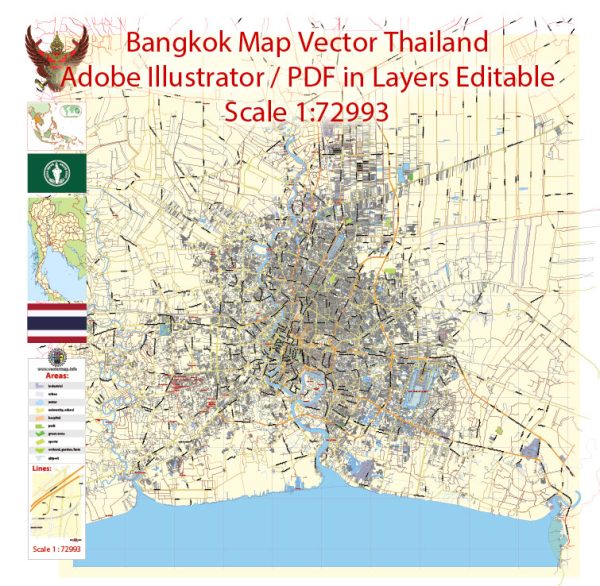Bangkok, the capital of Thailand, has a rich history of urban development that spans several centuries. The city’s evolution has been influenced by a combination of political, economic, cultural, and environmental factors. Here’s an overview of the history of urban development in Bangkok:
- Early Settlements: The area where modern-day Bangkok is located has been inhabited for centuries. In the 15th century, a small trading post called Bang Makok was established on the banks of the Chao Phraya River. This marked the beginnings of the city.
- Ayutthaya Period (1351-1767): Bangkok’s strategic location along the Chao Phraya River made it an important trade and transportation hub during the Ayutthaya Kingdom. In 1767, the Burmese invasion led to the fall of Ayutthaya, and the capital was moved to Thonburi, located on the west bank of the river.
- Rattanakosin Period (1782-Present): King Rama I founded the new capital, known as Rattanakosin, on the east bank of the Chao Phraya River in 1782. The construction of the Grand Palace and numerous temples, such as Wat Pho and Wat Arun, marked the city’s emergence as a cultural and political center.
- Urban Planning and Infrastructure: Rama IV (King Mongkut) initiated modern urban planning in the mid-19th century. Streets were laid out in a grid pattern, and canals were replaced with roads. The city’s infrastructure was improved, and the first bridges across the Chao Phraya River were constructed.
- Expansion and Westernization: During the late 19th and early 20th centuries, Bangkok saw significant expansion and modernization. This was a period of Western influence, with the construction of European-style buildings and the introduction of trams, electricity, and other modern amenities.
- World War II and Urban Growth: World War II and the post-war period brought rapid urban growth and industrialization to Bangkok. This era witnessed the development of modern commercial and residential areas.
- Contemporary Urban Development: In recent decades, Bangkok has experienced rapid urbanization and population growth. Skyscrapers, shopping malls, and transportation networks have become prominent features of the city. The construction of the BTS Skytrain and MRT subway systems has improved transportation within the city.
- Challenges and Modernization: Bangkok faces challenges related to traffic congestion, pollution, and flooding due to its low-lying location and the impacts of climate change. The city continues to evolve with infrastructure development, urban planning, and efforts to address these issues.
- Preservation of Cultural Heritage: Despite modernization, Bangkok has made efforts to preserve its cultural heritage. Historic sites, temples, and traditional architecture remain integral to the city’s identity, and there are ongoing conservation and restoration efforts.
- Future Development: As of my last knowledge update in January 2022, Bangkok was continuing to grow and modernize. Plans for further expansion and improvements in public transportation, as well as efforts to address environmental and sustainability issues, were being considered.
Keep in mind that urban development is an ongoing process, and the city’s development may have progressed further since my last update. Bangkok’s history of urban development reflects its transformation from a small trading post to a bustling metropolis with a unique blend of tradition and modernity.


 Author: Kirill Shrayber, Ph.D.
Author: Kirill Shrayber, Ph.D.